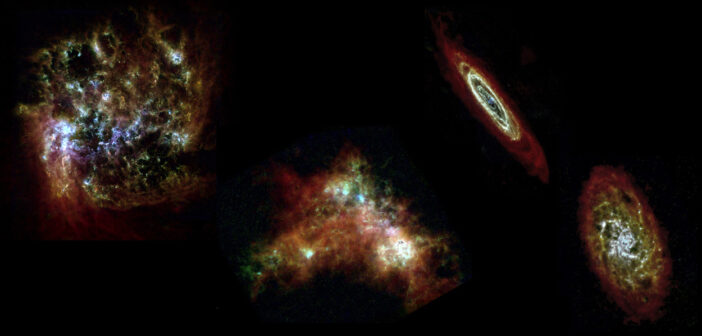Cosmic dust makes up just a small fraction of a galaxy’s mass, but it provides a useful way to study the interstellar medium: the gas and dust from which new stars and planets form. Using maps created from Herschel Space Telescope data presented in an earlier article, a collaboration led by Christopher Clark (Space Telescope Science Institute) studied the dust in the Large Magellanic Cloud, the Small Magellanic Cloud, the Andromeda Galaxy, and the Triangulum Galaxy (from left to right; not to scale). The three-color images above show hydrogen gas (red), cool dust (green), and warm dust (blue), highlighting how the dust density and temperature varies from galaxy to galaxy. The team used the new maps to study the galaxies’ dust-to-gas ratio — an important descriptor of the interstellar medium — and found that the ratio increased as the density of the interstellar medium increased. This trend might suggest that dust grains can bulk up more readily by nabbing material from the surrounding gas when the interstellar medium is denser. To learn more about the evolution of dust in our neighboring galaxies, be sure to check out the full article linked below.
Citation
“The Quest for the Missing Dust. II. Two Orders of Magnitude of Evolution in the Dust-to-gas Ratio Resolved within Local Group Galaxies,” Christopher J. R. Clark et al 2023 ApJ 946 42. doi:10.3847/1538-4357/acbb66
